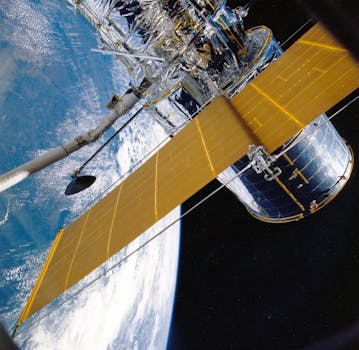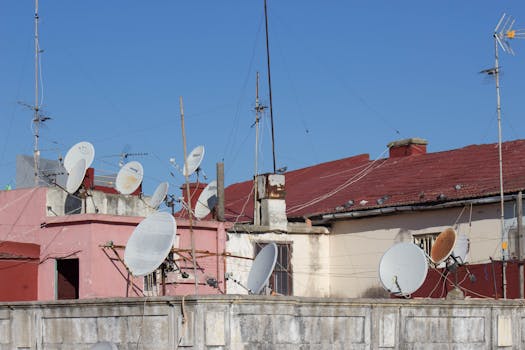
Updates from Above: Essential Insights into the Latest in Satellite Telecommunications
Satellite telecommunications, a vital component of modern communication systems, has witnessed significant advancements in recent years. Satellite telecommunications has become an essential part of our daily lives, enabling global communication, navigation, and remote sensing. In this article, we will delve into the latest developments in satellite telecommunications, exploring new technologies, applications, and the growing importance of satellite communications in the modern world.
Advancements in Satellite Technology

The satellite industry has experienced rapid growth, driven by innovations in satellite design, launch technology, and ground equipment. One of the most significant advancements is the development of high-throughput satellites (HTS), which offer faster data speeds and greater capacity. HTS satellites use multiple spot beams to provide targeted coverage, increasing the overall throughput and reducing latency. This technology has enabled the widespread adoption of satellite broadband services, particularly in rural and underserved areas.
Another significant development is the emergence of small satellites, also known as CubeSats. These compact satellites are designed to be smaller, lighter, and more affordable than traditional satellites, making them an attractive option for start-ups and researchers. Small satellites have opened up new opportunities for scientific research, technology demonstration, and commercial applications, such as Earth observation and communication services.
New Applications and Use Cases

Satellite telecommunications has expanded beyond traditional applications, such as television broadcasting and voice communication. New use cases include Internet of Things (IoT) connectivity, 5G backhaul, and disaster response and recovery. Satellite-based IoT solutions enable remote monitoring and control of devices, while 5G backhaul services provide high-speed connectivity for cellular networks. In the event of a disaster, satellite communications can provide critical connectivity, facilitating search and rescue operations, emergency response, and relief efforts.
Satellite telecommunications also plays a crucial role in maritime communication, enabling ship-to-shore communication, navigation, and remote monitoring of vessels. Additionally, satellite-based services are used in aviation, providing in-flight connectivity, navigation, and communication services for commercial and private aircraft.
The Growing Importance of Satellite Communications

The importance of satellite communications cannot be overstated, particularly in today’s interconnected world. Satellite telecommunications provides global coverage, enabling communication services to reach remote and underserved areas, where terrestrial infrastructure is limited or non-existent. This has significant implications for digital inclusion, as satellite-based services can bridge the connectivity gap, providing access to information, education, and economic opportunities.
Satellite communications also plays a critical role in national security, providing secure and reliable communication services for military and government agencies. Additionally, satellite-based services are used in environmental monitoring, tracking climate change, weather patterns, and natural disasters, enabling scientists to better understand our planet and predict potential threats.
See more:




